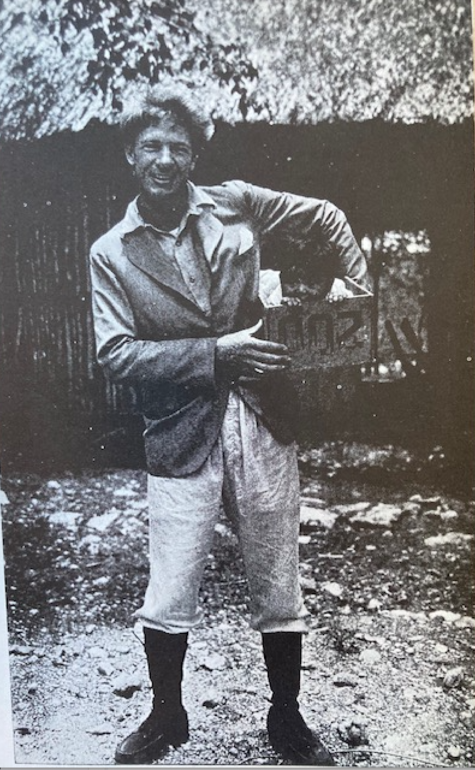
Halliburton at Chichen Itza
*
December 10, 2023
by Philip Gambone
In his day, he was known as the Prince of Pilgrims, a world-roaming traveler always chasing new horizons in search of unconventional experiences, a good story to tell, and hefty profits from the sale of his books. One magazine described him as a "dashing, modern Don Quixote, whose gay vagabondage has led him in search of romance and adventure to the far corners of the earth."
This was Richard Halliburton (1900-1939). His enormously popular travel books introduced readers to exotic places around the world, chosen for the opportunities they gave him to plunge into risk-taking thrills, such as swimming the length of the Panama Canal and flying upside down over the Taj Mahal. Time magazine called him "romantic, poetic, enthusiastic, bubbling, impetuous, adventurous, dramatic, enthralling." Another journal noted, "He knows his verbs and adjectives and everything about a writer's craft," adding, a bit sarcastically, "and he also knows his dollars and cents."
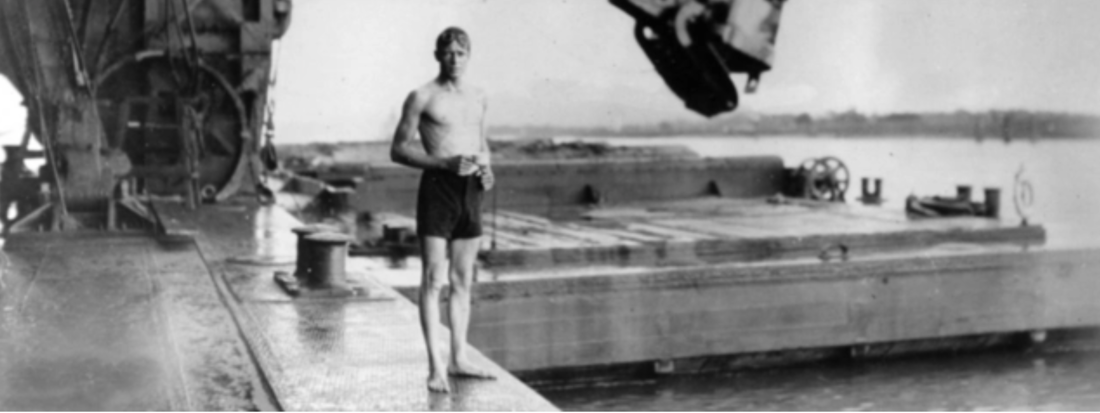
Halliburton about to swim the Panama Canal
*
Perhaps only an American could have cobbled together a career like Halliburton's: a dare-devil adventurer, who was also a hugely self-promoting writer and lecturer. "Halliburton is nowhere as deep as Joseph Conrad or as riveting as Jack London," writes one of his biographers, Gerry Max. But his insistence that "one's destiny may very well lie abroad and not at home" was one that earned him thousands of rapt fans.
Halliburton was born into a comfortable Tennessee family, dedicated to "enlightened materialism and a healthy code of morals," to quote another biographer, Jonathan Root. He went to Lawrenceville, an elite New Jersey prep school, where he was editor-in-chief of the school's newspaper. In 1917, he entered Princeton University. While at Princeton, he signed up for Naval training, eagerly anticipating that he would be shipped off to the war overseas, but during the autumn of his sophomore year, the war ended, which left him disappointed and frustrated. "There seems to be something in turmoil inside me all the time," he wrote his father. "The idea of leading a monotonous, confined, respectable life is horrible to me."
Young Richard's restlessness did not abate. He took long, nighttime walks, once all the way to Philadelphia. In the winter of 1919, he was elected to the board of the Daily Princetonian, for which he wrote cheeky, impertinent editorials that criticized his professors. Already, he was proclaiming himself a non-conformist.
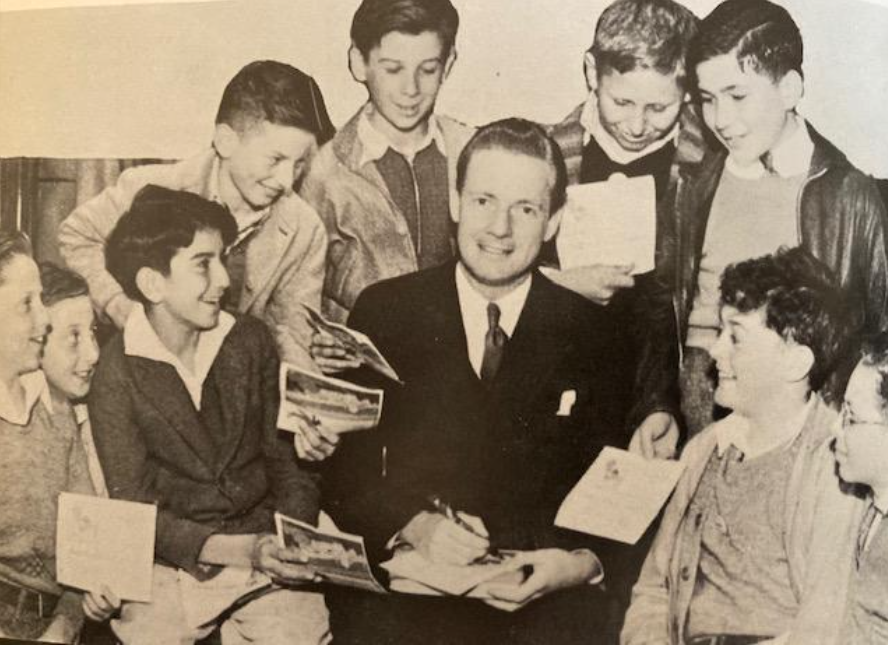
Autographing books for schoolboys, 1934
*
That summer, he withdrew all his savings, which amounted to $65, and gave in to an "overpowering obsession" to travel. Signing up as a seaman on a freighter, he sailed for Europe. "Europe's geography is at my fingertips," he wrote his mother. It might well have been his motto for life, though, in subsequent trips, he hardly confined himself to the geography of Europe.
When he got to England, the 19-year-old Halliburton embarked on a walking tour. After a "glorious" visit to Oxford and a week in London, he flew (in 1919!) to Paris. Again he walked—this time to Versailles, Lille, and the battlefields of the Somme. He returned to Princeton that winter, but his real desire, as Root puts it, was "to vagabond around the world." By the spring of his senior year, he started outlining the route of an around-the-world trip and thinking about the book he would write about it. "It will be a great melting pot of history, literature, personal autobiography, humor, drawings, paintings, photographs, pathos, romance, adventure, comedy, tragedy … part of the most vivid narrative of real experiences of a very live, open-eyed and sympathetic young man."
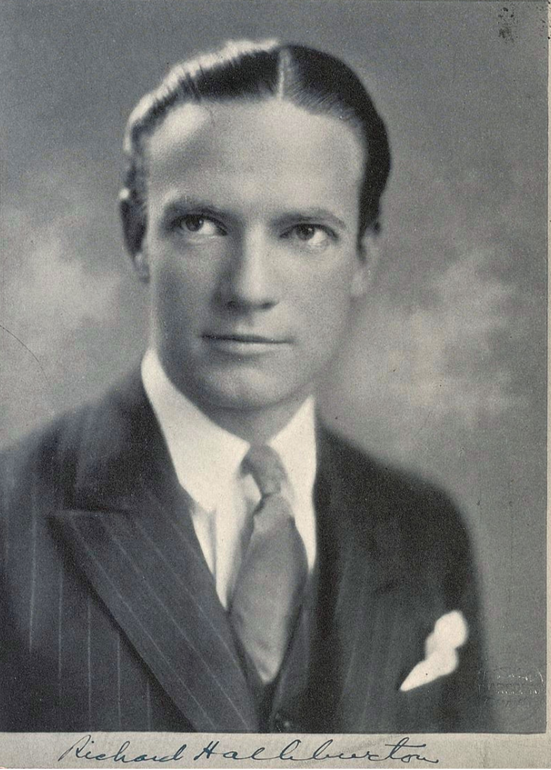
Richard Halliburton
*
With a friend, he hired on as a seaman aboard another freighter. During the six-week crossing to Hamburg, he began keeping notes, which he later turned into newspaper and magazine articles. "This trip is my work," he said. "Some Princeton grads of '21 went into banking, some into theology. I went into traveling and writing and I take it as seriously as they do."
The trip took a year and a half. He trekked—and hitchhiked, swam, trained, rode on donkeys, and stowed away on ships—through Europe, Egypt, India, Kashmir and Tibet, Burma, Siam, Angkor Wat, Saigon, Singapore, Java, Bali, Hong Kong, Shanghai, Peking, Manchuria, Vladivostok, and Japan—"following in the footsteps of his own fancy," says Root. "Oh, to live a life that is NOT routine," Halliburton once wrote to his father when he was still at Princeton, "and NOT in a rut so deep one can't see over the sides to the limitless horizon beyond." His circumnavigation of the globe honored that vow.
Back in the States, he began assembling the notes and articles he had written into a book, which he titled The Royal Road to Romance. After ten publishers rejected it, it was taken by Bobbs-Merrill. The book received mixed reviews. The New York Herald-Tribune didn't much care for its "bumptious juvenility." More cordial reviewers found it "picturesque," "fascinating," and "captivating." By January 1926, it had climbed to the best seller lists.
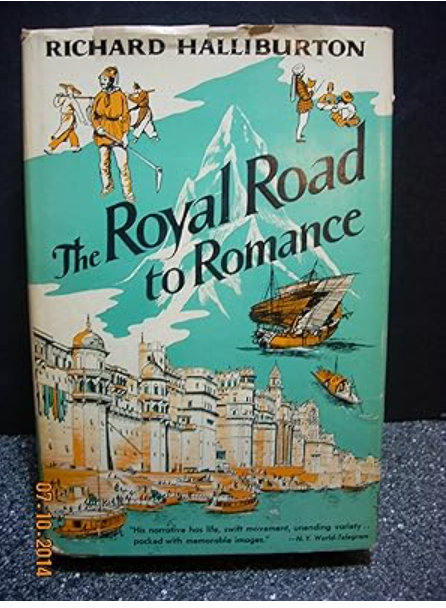
Before The Royal Road was even published, Halliburton took off again, this time to follow the route from Troy to Ithaca that Ulysses had taken in Homer's epic poem. "The world doesn't really want philosophers and intellects," he declared with self-justifying bravura. "The world wants escape—it wants romance. Before I die I will have experienced every emotion and tested all my senses."
Halliburton's Homeric odyssey resulted in his second book, The Glorious Adventure. To his editor, he called it "a true adventure with buckets of bright paint flung over it." The bright paint notwithstanding, it, too, made the best seller list in 1928. Halliburton became the darling of the lecture and book-signing circuit; his books began to be translated into several European languages.
In the wake of all this success, he was offered a contract for a series of articles on Latin America. He decided that the series, and the book he would fashion from the series, would be called New Worlds to Conquer. "I have to go to Mexico and South America and like it—and I will," he declared to his father, who ended up accompanying him for the first few weeks of the voyage.
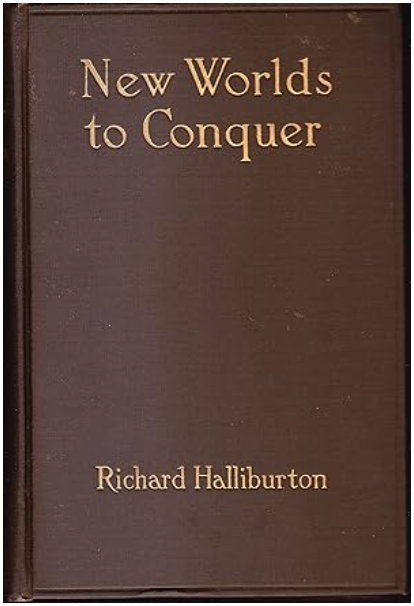
New Worlds to Conquer begins with a prologue that imagines the arrival of Columbus in the New World on the island he named San Salvador. "After more than four centuries of neglect, I rediscovered it in the modern manner," Halliburton wrote with characteristic braggadocio, "by seaplane."
Halliburton's plane touched down in the water and drifted toward the beach. He plunged overboard and waded ashore to greet the astonished natives. His first mission accomplished, he took off for Mexico to trace the route that Cortez—"defying all hell's devils"—had made to conquer the Aztec Empire, "the greatest single achievement in the military annals of Spain."
Like his other two books, New Worlds to Conquer is an adventurer's book, and the explorations Halliburton made were all about risky, offbeat undertakings. The first such thrill was a climb to the top of the great pyramid of Cholula, the largest monument ever built in the Americas. At the summit, the teocalli (Aztec temple) was gone. In its place a suffocating Christian church with its "gingerbread gewgaws" and overall tawdriness irritated him, but the view, especially of the three sacred mountains—Ixtaccihuatl, Orizaba, and the "silver cone" of Popocatepetl—filled him with "religious awe and reverence for the gods."
And so, he and his father, who was accompanying him in Mexico, set out to climb snow-clad "Popo." With a donkey named Virgie and their Indian guide Jesús, Halliburton and père set out to follow in the footsteps of Cortez, whose trail toward the Aztec capital in 1519, crossed over the high saddle that links Popocatepetl and Ixtaccihuatl. "Nine thousand, ten thousand, eleven thousand feet we climbed, shaded by huge and ancient pines that may have shaded Cortez's men when they passed this way."
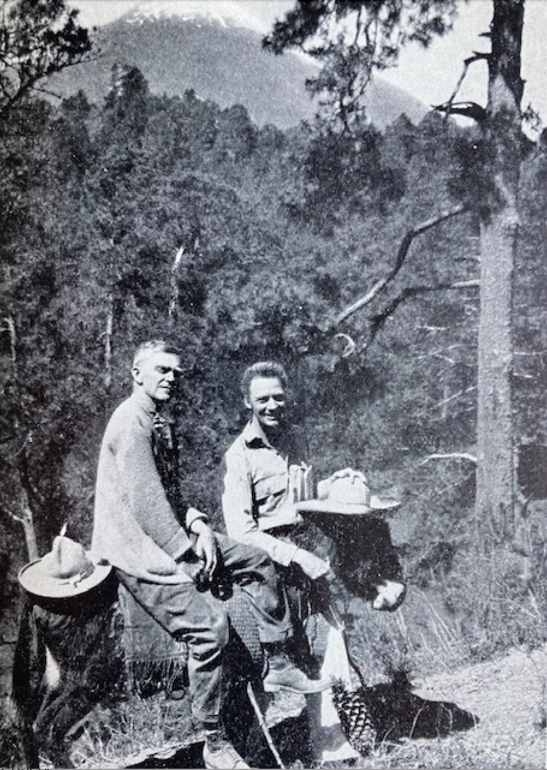
Father and son at Popocatepetl
*
After several mishaps and calamities—freezing rain, boots inadvertently burned in a campfire, his father's turning back, knee-deep snow, the dazzling glare of sunlight—Halliburton and Jesús reached the summit. "My head throbbed, my legs trembled with exhaustion, but I forgot all that, now that the monstrous crater, smoking and sulphurous, evil and threatening, gaped a thousand feet below me. I was breathing a maddening wine of frozen fire that made me want to shout, to sing … to plunge headlong into the crater, to fall on my knees."
Halliburton was so excited that, in taking several photographs of the crater, he forgot to advance the film. When he went to retrieve a new roll of film, it fell from his fingers into the crater. Letting out a "howl of despair," he and Jesús flung themselves down the volcano and back to camp.
The despair was temporary. Not to be daunted, Halliburton was determined to have "another battle with the triumphant enemy" and get his photo op. He hired the best photographer in Mexico. It was a battle "far more savage than the first attack," as now he and the unnamed photographer, aided by an assistant and four porters ("clad only in cotton clothes"), had to lug three hundred pounds of photo equipment up the mountain, which was lashed by 50-mile-per- hour arctic winds.
They made the ascent at night in order to have the photo machinery set up by morning. One by one, the assistant and the porters dropped away, which meant that Halliburton and the photographer had to scuttle all of the equipment except a panoramic camera and a thirty-pound tripod. At the summit, the fog was overwhelming. They waited until dawn. To their "unspeakable joy," the fog lifted. "Popo's guardian gods had at last relented." They set up the camera, loaded with a roll of film three feet long and ten inches high. The resulting panoramic photograph was perfect.
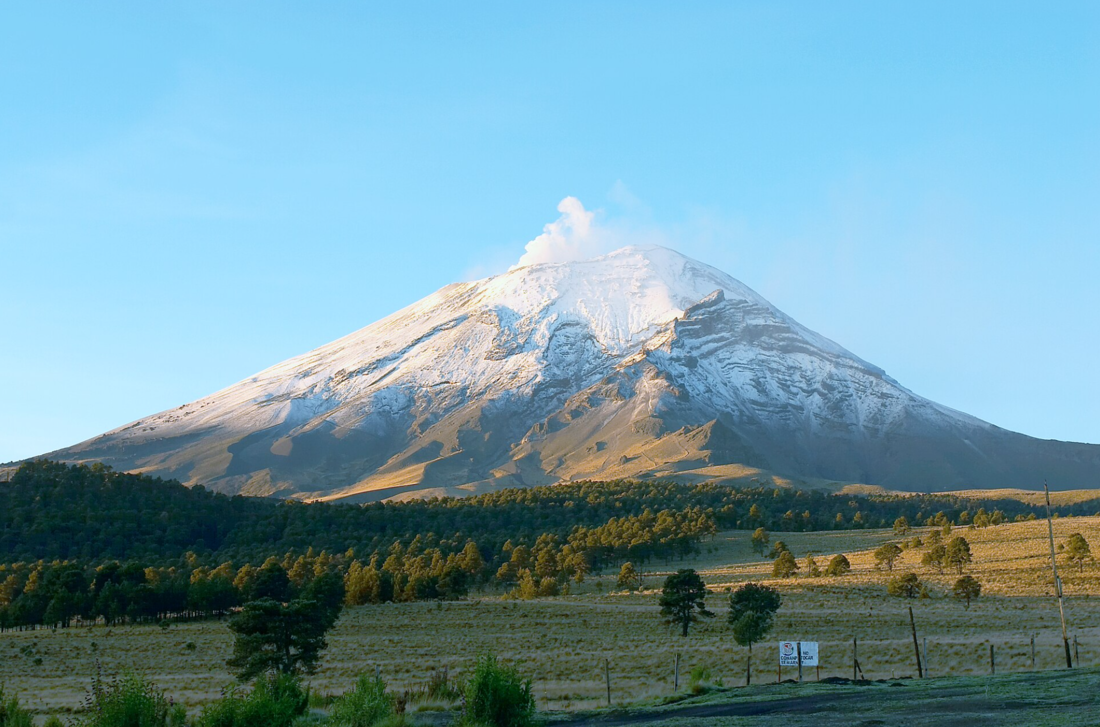
Popocatepetl
*
Halliburton's next Mexican adventure took him to the Yucatan, to the Well of Death or Sacred Well. The Maya—"the most cultivated race, by far, of all the aboriginal Americans"—deemed this deep, murky well, scientifically known as a cenote or sinkhole, the home of Yum-Chac, their rain god. And to him, from time to time, they would hurl "virgin brides and attendant warriors" into the dull, dead, green waters as a mollifying sacrifice.
Halliburton took a bus to Chichen-Itza, where he was immediately enchanted by the "gorgeous carved-stone city of the past." He climbed to the top of the great pyramid and looked back down "out over the shimmering jungle" to the causeway that ran to the Well of Death.
In several pages of prose splashed with more "buckets of bright paint," he described himself imagining the sacrificial procession—the "little victim on her tragic journey"; the priests, "resplendent in their ceremonial attire, their turquoise masks, their feathered diadems"; the acolytes with their incense; the muffled rumbling drums; the catafalque of gold and jewels.
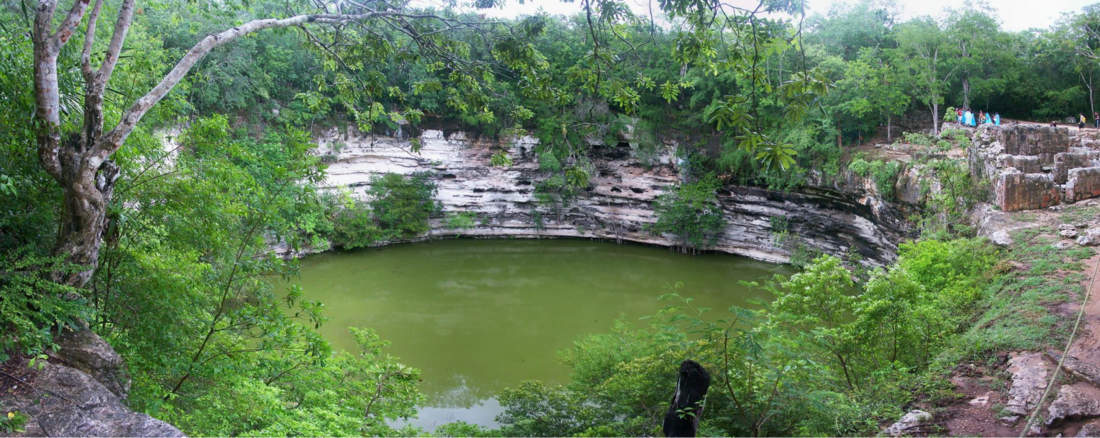
The Well of Death
*
In the "melancholy beauty of the night," with jaguars and lizards moving about, Halliburton crawled to the edge of the well and peered into the chasm. Again, he poured on his syrupy prose: "There was a faint splash deep down in the pool—perhaps some scaly monster stirring in his sleep, or a water-spirit ascending from Yum-Chac's halls." He found it hard to look away, "so insidious was the lure of these grisly waters." He was tempted to leap in, but reason prevailed.
And then his reason left him. In a split second, he plunged, fully clothed, into the water, seventy feet below. Somehow, he survived, not only the icy waters, but his water-logged climb back up to the top. "Enchantment was gone," he wrote. "No longer did I yearn for Yum-Chac's sea-green corridors. All I wanted was a cigarette." Two days later, Halliburton returned, ready to take the plunge again, this time to "do it properly."
He was accompanied by a friend who brought along a movie camera and suggested that "for the benefit of his movie," Halliburton might "register a few emotions as I fell—rapture, for example, or wistfulness." He stripped off his coat and shirt (but kept on his trousers and heavy socks "to break the sting"), flung out his arms like an angel, and jumped. The angelic pose lasted only until he hit the water. A shower of stars and a wrenching pain convinced him he had broken his neck. Happily, he was only knocked deaf and speechless for three days.
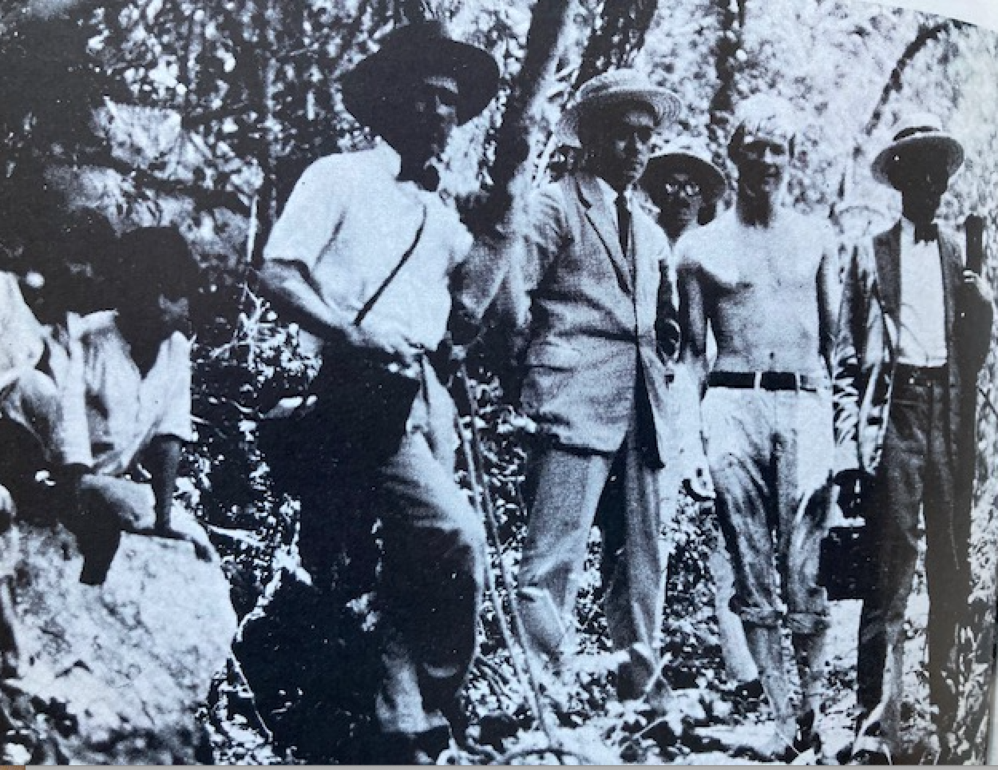
After his plunge into the Well of Death
*
Halliburton left Mexico aboard a dirty and dilapidated 30-ton boat bound for Puerto Barrios in Guatemala, the next stop on his Latin American trip. His travel companions were twenty Mexican soldiers and a hundred Indigenous chicle harvesters. It turned out that the boat's captain was smuggling cases of bootleg beer and whiskey. They had hardly left port, when the thirsty soldiers and workers descended on the alcoholic cache and "annihilated the beer in oceans." Resigned to the wholesale theft, the captain put in at Cozumel.
The unexpected stop at Cozumel, triggered more rapturous prose from Halliburton. He sang the praises of the "colossal monuments of whitest stone … miraculously built by those half-fabulous Mayas." He loved the coral reefs and the rainbow fish that idled in the coral caves. He imagined the "ghosts of reckless buccaneers" haunting the island.
Halliburton and his friend stayed on Cozumel fourteen days, lazing about. "We had books which we never read, pen and paper we never touched. Nothing mattered but the music of the sea." Their idyll came to an end when they booked passage on another boat bound for Puerto Barrios.
Without question, Halliburton had his defects. As Gerry Max puts it, he "tended to overwrite, to give way to gratuitous amateurish philosophizing, and, in moments of high drama, to be trite." True, his books may have had "no special message," as one newspaper editorial put it, but during a time when foreign travel was still not within the reach of most Americans, he took his readers on glorious imaginative journeys to places they never had a chance of visiting. His foray into Mexico, where he pulled off his Aztec and Mayan high jinks, was but a small episode in a life full of daring, if crazy, flights of fancy.
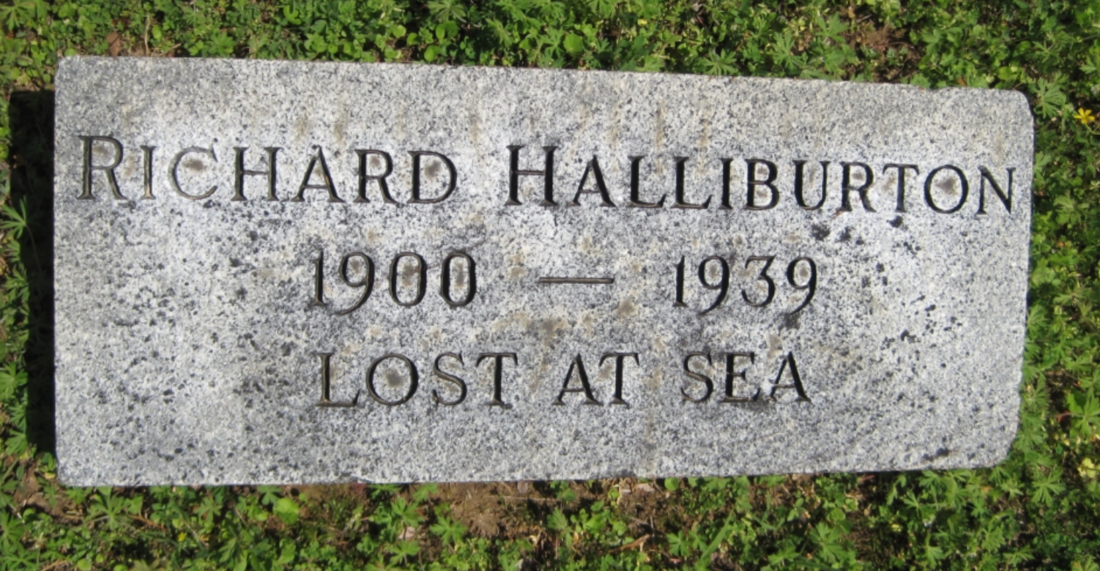
Halliburton memorial
*
During one of his book-tour lectures, Halliburton told his audience: "God made the world so large for restless people that when you feel that urge to be off on the Royal Road to Romance, rebel against the prosaic mold into which you are being poured and fare forth in search of the beautiful, the joyous and the romantic." I'd like to think that every gringo who comes to Mexico shares a bit of that sentiment.
Richard Halliburton died at sea in 1939, attempting to cross the Pacific in a Chinese junk.
**************
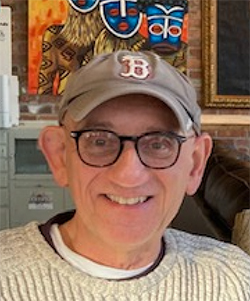
Philip Gambone, a retired high school English teacher, also taught creative and expository writing at Harvard for twenty-eight years. He is the author of five books, most recently As Far As I Can Tell: Finding My Father in World War II, which was named one of the Best Books of 2020 by the Boston Globe. It is available through Amazon, at the Biblioteca bookshop, and at Aurora Books off the Calzada de la Aurora.
**************
*****
Please contribute to Lokkal,
SMA's online collective:
 ***
***
Discover Lokkal:
Watch the two-minute video below.
Then, just below that, scroll down SMA's Community Wall.
Mission

Visit SMA's Social Network
Contact / Contactar

